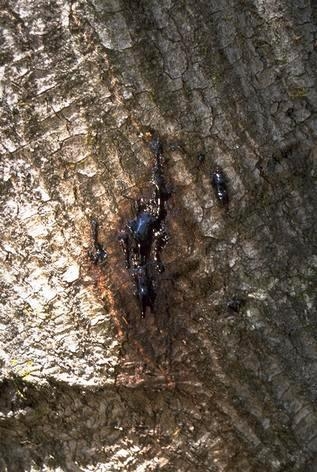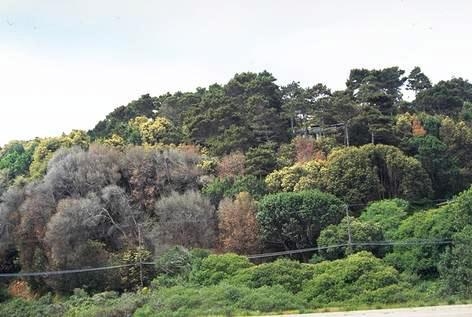
In California, P. ramorum is primarily a leaf pathogen and thrives in coastal tanoak/redwood forests and oak woodlands. There are two categories of hosts for P. ramorum. In trunk hosts, the pathogen infects the bark and can cause bark cankers that may ooze a thick, sticky sap. Trunk hosts of the pathogen include many species including tanoak, coast live oak, California black oak, and Shreve's oak.
On leaves, foliar symptoms range from leaf spots to twig dieback. Sudden oak death can be lethal to trees in both forest settings and residential landscapes. Foliar hosts include California bay laurel, rhododendron and camellia.
To learn more about this disease, read Pest Notes: Sudden Oak Death and visit the UCCE Sonoma County Sudden Oak Death website.
